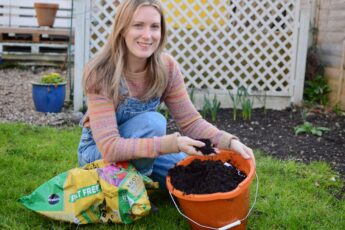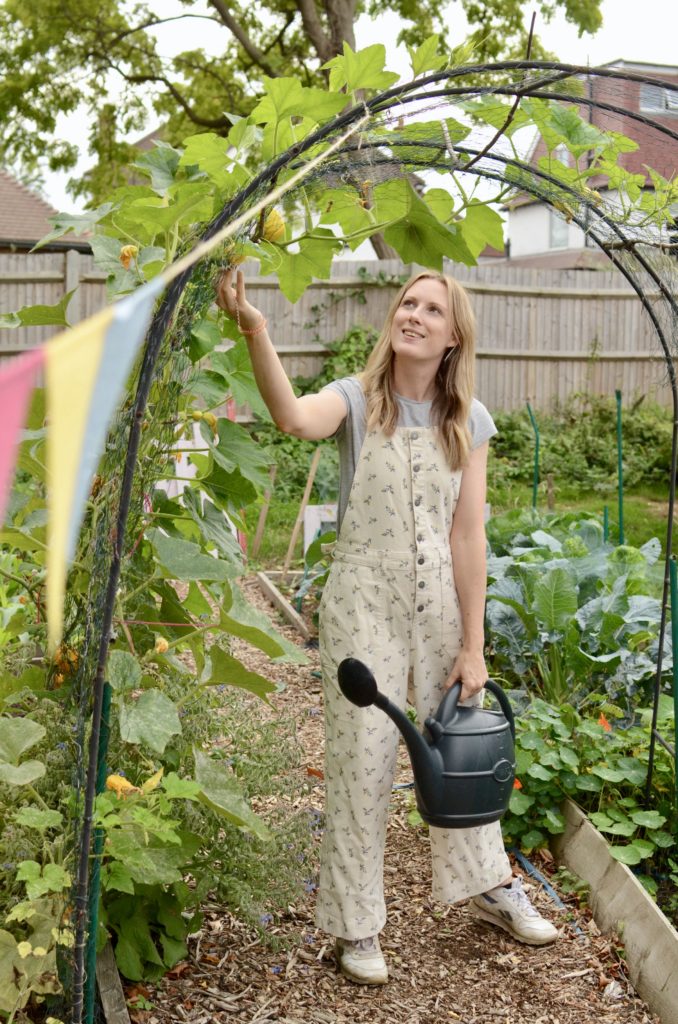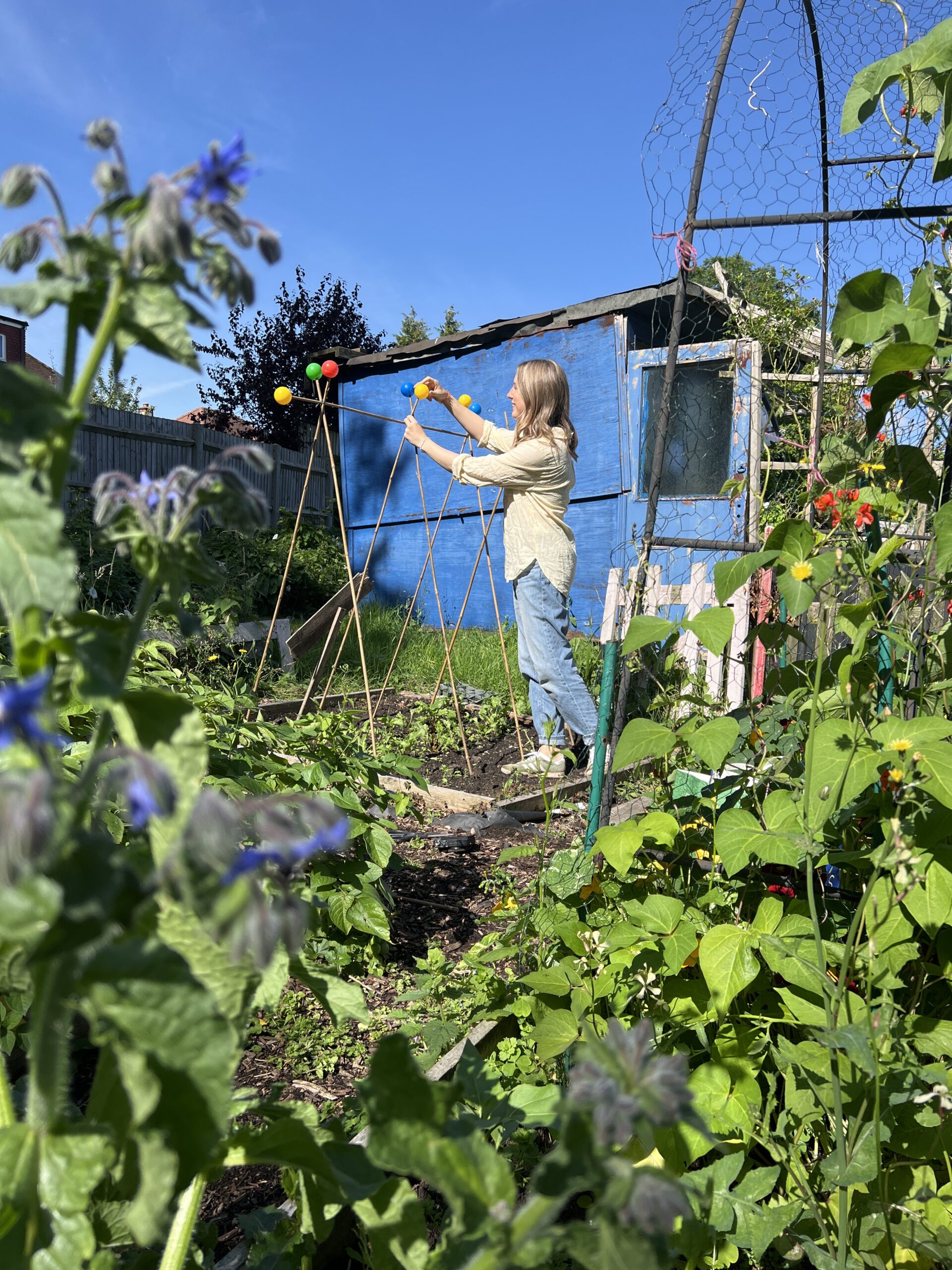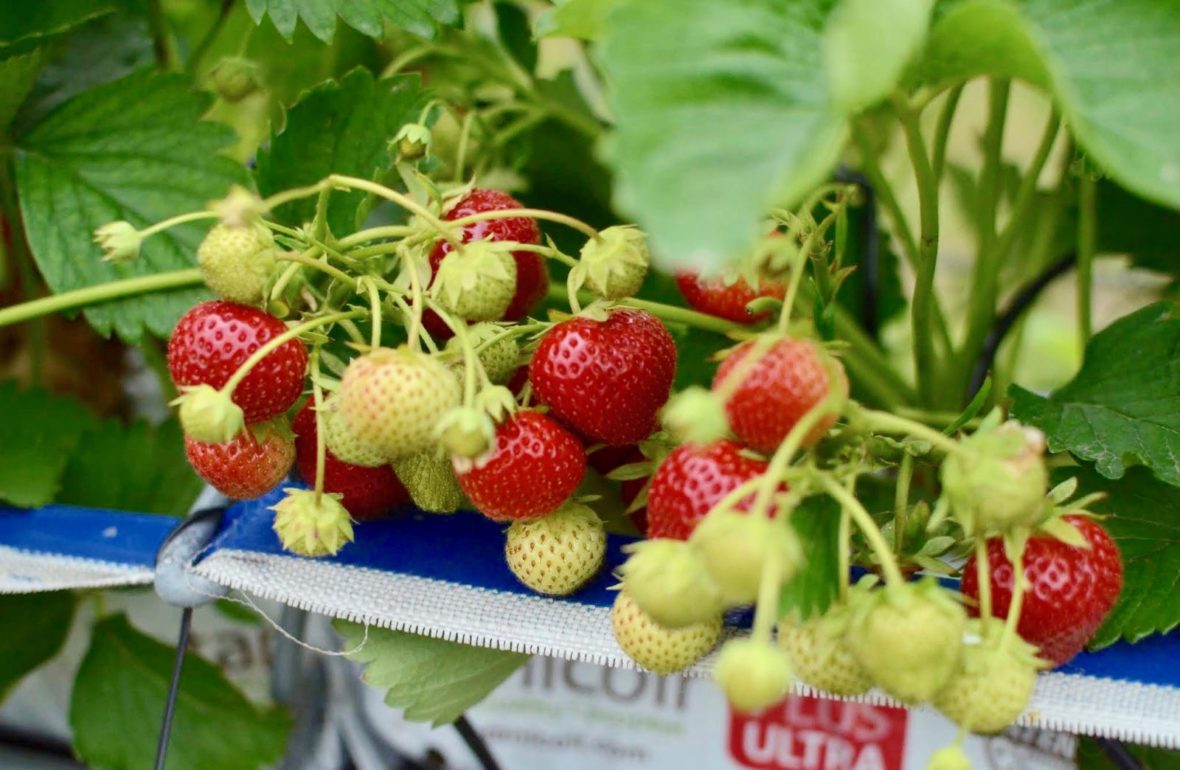
In this guide I’ve put together everything I know about growing strawberries. Most of what I have learned is through trial and error, or through other allotmenters advice. I hope this helps you to grow the best possible strawberries you can!
The great thing about strawberries, apart from the fact they are super delicious, is that they are so easy to grow. You dont even need much space, a hanging basket or medium sized pot will do just fine.
So here is everything I know about growing strawberries:
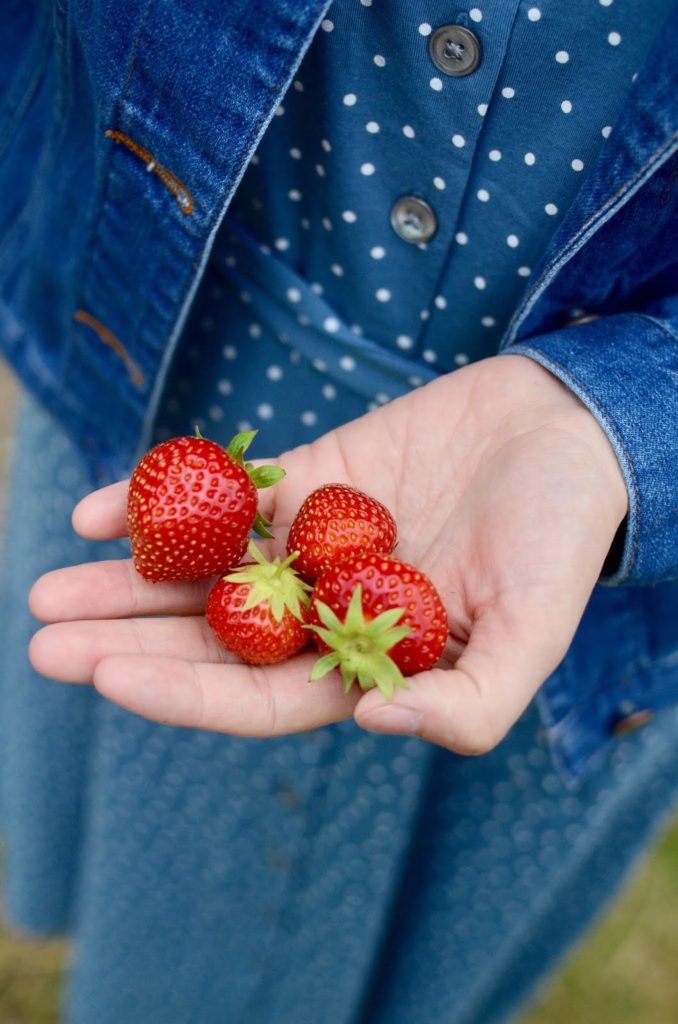
You can buy strawberry plants fairly cheaply in any good garden centre for a few pounds. Once you have a few growing, you’ll never again need to purchase new plants as the plants are so good at producing new ones.
Strawberry plants produce runners, long green stems, and at the end of them is a new baby plant. When you start to see runners being produced, simply pop a pot with some compost in underneath it and hold down with a stone until roots are formed. Then snip it off and voila! A whole new strawberry plant for free!
It should be said, that producing new plants takes a lot of energy out of the original one and so you should only allow 2 or 3 runners per plant, and not for at least the first two years of your strawberry plants life. Lets give it a chance to grow first!
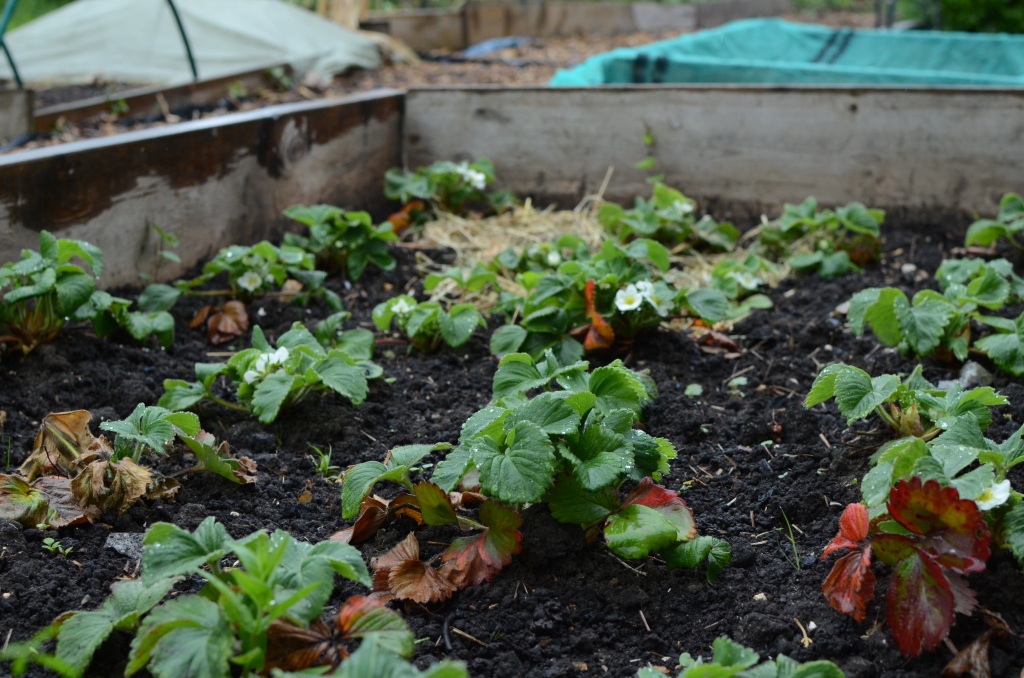
Strawberry plants can be planted in almost anything. I have them in a raised bed at my allotment plot, but I’ve also grown them in pots, window boxes and hanging baskets. This is a particularly good idea to help with the invasion of slugs and snails who will inevitable find their way to one of your plants the second it produces fruit! The higher up off the ground the strawberries are, the better.
Strawberry plants should be plants about half a foot away from one another to give each plant the room it needs to grow properly. It also deters disease from spreading, as well as making it easier to spot weeds and any slugs that have crawled across them to have a munch.
When the spring time comes and you see the flowers appear, feed your strawberry plants with some liquid seaweed to give it the strength it needs to produce some really good fruit.
If growing in a compost filled bed, make sure to mulch your plants with something like straw or a weed membrane to stop the ripening strawberries from touching the soil and turning to mush before you’ve had a chance to pick them. My plot neighbour grows her strawberry plants through upturned pots so that the berries hang neatly off the sides!
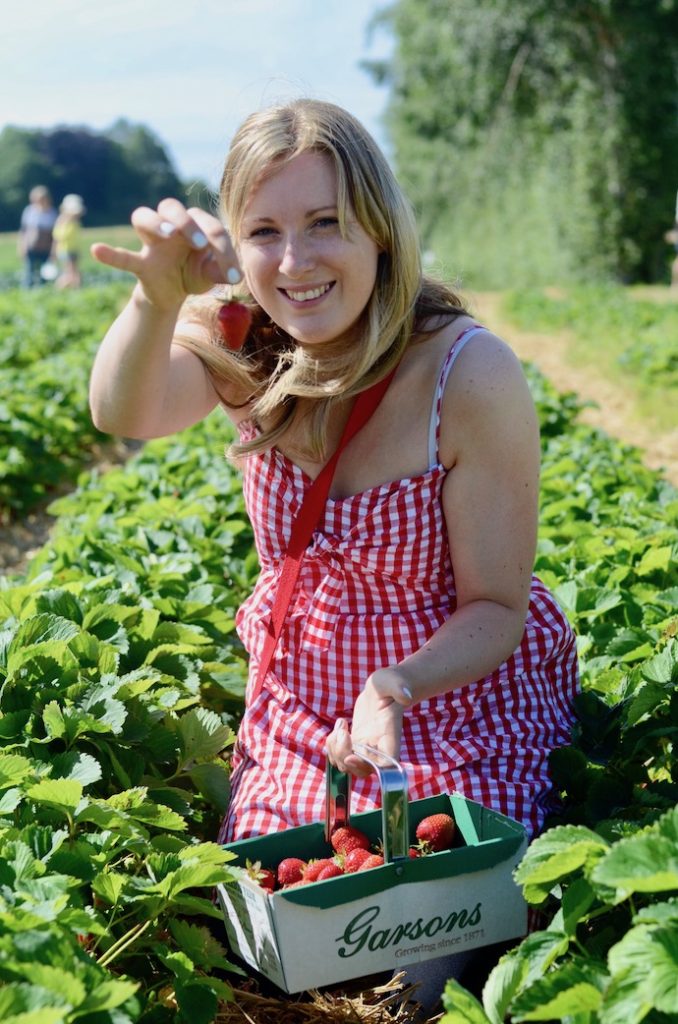
Birds love strawberries as well as the slugs and snails. A good tip is to net your strawberries as they ripen to deter them from swooping down for a feast. Another tip is to paint some rocks red and scatter around your strawberry patch before the strawberries ripen with the idea being that the birds will get confused and assume the new strawberries are also rocks. I’m not sure how effective it is, but might be worth a go!
Strawberry plants last about 5 years, but it is the first 2 years of life when they produce the best possible strawberries. Luckily, if you look after the new runner plants, you should always have a supply of the best strawberries!
Once the crop has ended, make sure to tidy up your strawberry bed by removing any dead plants, foliage and rotted strawberries. Make sure the plants are spaced out again nicely and runners are potted up or planted elsewhere. If growing in a pot, just be sure to chop off brown leaves and runners and then top up with some fresh compost.
Follow these simple rules and you will be sure to be able to grow some really delicious strawberry plants, whether that be in your home garden or at your allotment plots. Just be warned, strawberry plants are invasive and will spread like wildfire if not properly cared for!
Happy strawberry growing!



